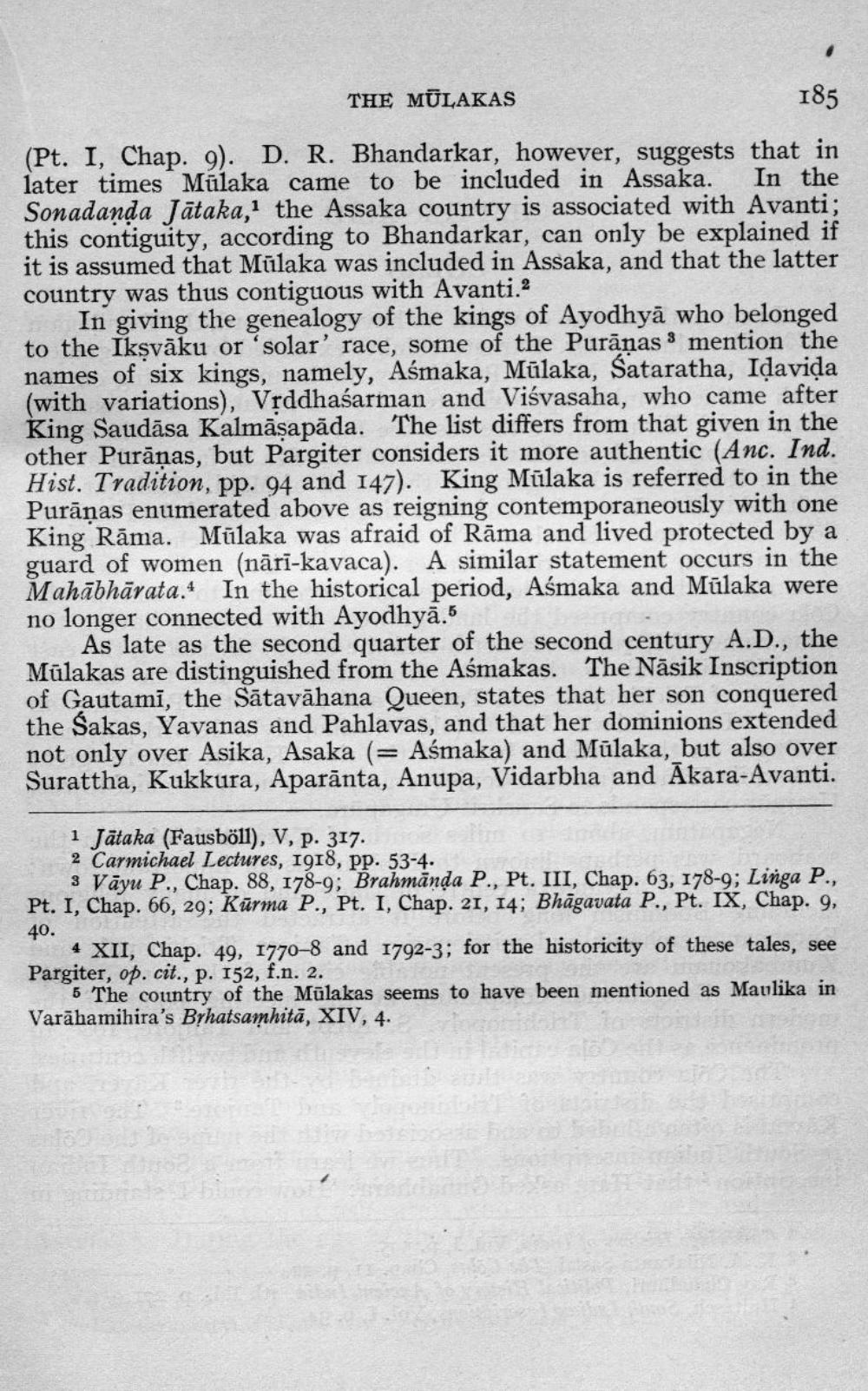________________
185
(Pt. I, Chap. 9). D. R. Bhandarkar, however, suggests that in later times Mülaka came to be included in Assaka. In the Sonadanda Jātaka,1 the Assaka country is associated with Avanti; this contiguity, according to Bhandarkar, can only be explained if it is assumed that Mulaka was included in Assaka, and that the latter country was thus contiguous with Avanti.2
In giving the genealogy of the kings of Ayodhya who belonged to the Ikṣvāku or 'solar' race, some of the Puranas mention the names of six kings, namely, Asmaka, Mulaka, Sataratha, Idaviḍa (with variations), Vṛddhaśarman and Viśvasaha, who came after King Saudāsa Kalmaṣapada. The list differs from that given in the other Purānas, but Pargiter considers it more authentic (Anc. Ind. Hist. Tradition, pp. 94 and 147). King Mulaka is referred to in the Purāņas enumerated above as reigning contemporaneously with one King Rama. Mulaka was afraid of Rama and lived protected by a guard of women (näri-kavaca). A similar statement occurs in the Mahabharata. In the historical period, Aśmaka and Mülaka were no longer connected with Ayodhya.5
As late as the second quarter of the second century A.D., the Mülakas are distinguished from the Aśmakas. The Nasik Inscription of Gautami, the Satavahana Queen, states that her son conquered the Sakas, Yavanas and Pahlavas, and that her dominions extended not only over Asika, Asaka (= Aśmaka) and Mulaka, but also over Surattha, Kukkura, Aparanta, Anupa, Vidarbha and Akara-Avanti.
THE MULAKAS
1 Jātaka (Fausböll), V, p. 3I7.
2 Carmichael Lectures, 1918, pp. 53-4.
3 Vayu P., Chap. 88, 178-9; Brahmanda P., Pt. III, Chap. 63, 178-9; Linga P., Pt. I, Chap. 66, 29; Kurma P., Pt. I, Chap. 21, 14; Bhagavata P., Pt. IX, Chap. 9, 40.
4 XII, Chap. 49, 1770-8 and 1792-3; for the historicity of these tales, see Pargiter, op. cit., p. 152, f.n. 2.
5 The country of the Mülakas seems to have been mentioned as Maulika in Varahamihira's Bṛhatsamhita, XIV, 4.
entopads to
dino2




